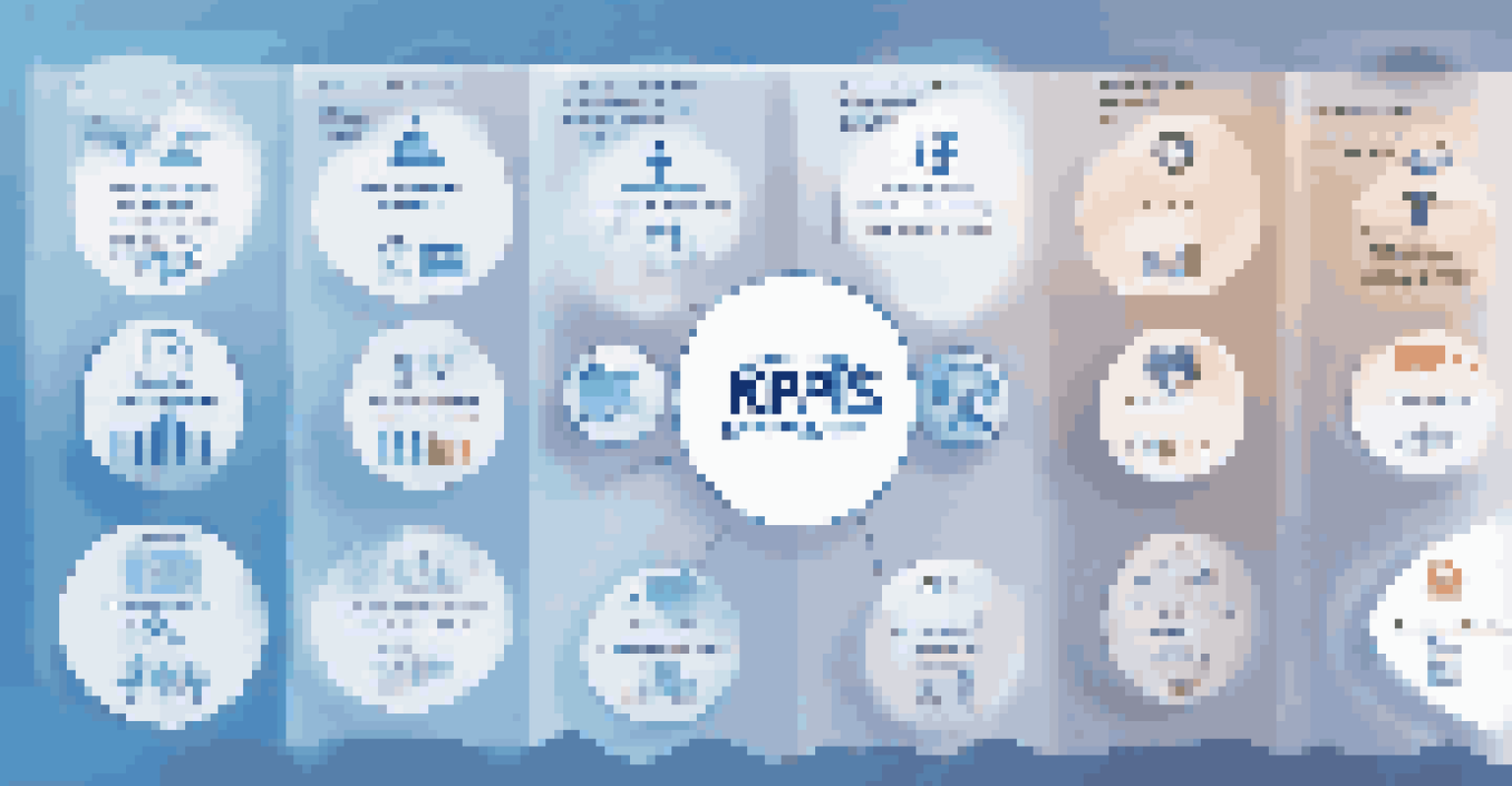Leveraging Data Analytics for Improved Employee Performance

Understanding Data Analytics in the Workplace
Data analytics involves collecting and analyzing information to make informed decisions. In the workplace, this means using metrics to assess employee performance, engagement, and productivity. By understanding how analytics function, organizations can identify trends and patterns that might otherwise go unnoticed.
In the age of data, the ability to analyze and act on information is a key competitive advantage.
For instance, a company might analyze sales data to determine which employees are performing well and which may need additional support. This not only helps in recognizing high performers but also aids in addressing the challenges faced by others. Essentially, data analytics acts as a magnifying glass, making it easier to see where improvements can be made.
Moreover, harnessing data analytics fosters a culture of transparency and accountability. Employees are more likely to engage with their work when they know that their performance is being measured fairly and accurately. This can lead to a more motivated workforce that is eager to enhance their skills and contribute meaningfully.
Identifying Key Performance Indicators (KPIs)
Key performance indicators, or KPIs, are essential metrics that help businesses measure success. These indicators vary from one organization to another, but they typically focus on aspects such as productivity, quality of work, and employee satisfaction. By establishing relevant KPIs, companies can create a clear roadmap for evaluating employee performance.

For example, a retail company might track the number of sales each employee makes in a given period. This data not only identifies top sellers but also highlights areas where training may be necessary. When KPIs align with business objectives, employees can understand how their roles contribute to the overall success of the organization.
Data Analytics Enhances Decision-Making
By analyzing performance metrics, organizations can identify trends and support employee development.
Additionally, regularly reviewing these KPIs ensures that they remain relevant and effective. As business goals evolve, so should the metrics used to measure performance. This adaptability keeps employees informed and engaged, allowing them to align their efforts with the organization's vision.
Utilizing Employee Feedback for Continuous Improvement
Employee feedback is a goldmine of information that, when analyzed effectively, can drive performance improvements. Regular surveys, one-on-one meetings, and suggestion boxes are just a few methods organizations can use to gather insights. By incorporating this feedback into data analytics, companies can pinpoint areas of dissatisfaction or confusion.
What gets measured gets managed.
For instance, if multiple employees express frustration with a particular tool or process, it may be time to reassess its effectiveness. Listening to employee feedback and acting on it shows that their opinions are valued, fostering a positive workplace culture. This two-way communication creates a supportive environment where employees feel empowered to share their thoughts.
Moreover, analyzing feedback trends over time can reveal deeper insights into employee morale and engagement levels. This ongoing dialogue not only helps address issues promptly but also enhances overall job satisfaction and performance. When employees see their feedback translating into action, it motivates them to maintain high levels of productivity.
Training and Development Tailored by Data Insights
Data analytics can play a pivotal role in shaping training and development programs. By examining performance metrics, companies can identify skill gaps within their workforce. This targeted approach allows organizations to design training sessions that directly address the needs of their employees, leading to more effective learning experiences.
For example, if data shows that a team is struggling with customer service skills, management can implement tailored training sessions focusing on communication and problem-solving. This not only boosts individual performance but also enhances team dynamics, ultimately benefiting the entire organization. Investing in employee development based on data insights demonstrates a commitment to growth.
KPIs Guide Employee Performance
Establishing relevant KPIs allows businesses to measure success and align employee roles with organizational goals.
Furthermore, measuring the effectiveness of training programs through analytics helps refine future initiatives. By tracking employee progress post-training, organizations can understand what works and what doesn’t. This continuous improvement cycle ensures that training remains relevant and impactful, helping employees reach their full potential.
Creating a Culture of Accountability and Responsibility
Leveraging data analytics fosters a culture of accountability within the workplace. When performance metrics are visible and regularly reviewed, employees recognize that their contributions are being monitored. This transparency not only motivates individuals to perform their best but also encourages teamwork and collaboration.
A practical example is implementing a dashboard where employees can view their performance metrics alongside their peers. This visibility can spark friendly competition and inspire employees to reach new heights. When everyone knows that their efforts are being tracked, they are more likely to take ownership of their tasks and responsibilities.
Moreover, establishing clear expectations and consequences based on data-driven insights helps employees understand the importance of their roles. This clarity creates a sense of responsibility that can lead to improved performance across the board. When employees feel accountable, they are more inclined to invest in their work and strive for excellence.
Recognizing and Rewarding High Performers with Data
Recognition and rewards are powerful motivators for employees, and data analytics can help identify those who deserve it. By analyzing performance metrics, organizations can pinpoint high achievers and ensure they receive the acknowledgment they deserve. This not only boosts morale but also encourages others to strive for similar recognition.
For instance, using data to create an employee of the month program can showcase top performers based on specific criteria, such as sales figures or customer feedback. Celebrating these achievements reinforces a culture of excellence and inspires a collective commitment to high performance. When employees see their peers being recognized, it can spark a desire to elevate their own performance.
Recognition Boosts Employee Morale
Using data to recognize high performers fosters a culture of excellence and motivates others to improve their performance.
Additionally, leveraging data allows for personalized rewards that cater to individual preferences. Whether it’s bonuses, additional time off, or professional development opportunities, tailoring rewards increases their impact. When recognition is meaningful and data-driven, it fosters a motivated workforce eager to contribute to the organization's success.
Measuring the Impact of Analytics on Employee Performance
To truly understand the effectiveness of data analytics in enhancing employee performance, organizations must measure its impact. This involves regularly reviewing performance metrics and correlating them with the implementation of analytics-driven strategies. By tracking these changes, companies can assess whether their efforts yield positive outcomes.
For example, if a training program was introduced based on data insights, analyzing employee performance before and after the program can highlight its effectiveness. This evaluation not only validates the use of data analytics but also provides valuable insights for future initiatives. When organizations can see a tangible improvement, it creates a compelling case for continuing these practices.

Moreover, sharing these results with employees reinforces their role in the process. When employees know that their performance improvements are tied to data-driven strategies, it encourages a culture of continuous growth. This ongoing measurement creates a feedback loop that ensures both the organization and its employees are committed to success.